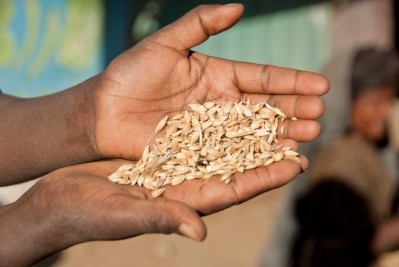Canada
Plans to enhance the durability of durum wheat

Researchers at the University of Saskatchewan, Agriculture and Agri-Food Canada and the National Research Council (NRC) and the CIMMYT will employ sophisticated genomics (DNA sequencing) and fine-mapping techniques to identify disease resistant genes and markers to improve the protective qualities of future wheat variants, according Dr Faouzi Bekkaoui, executive director of the wheat improvement flagship programme for the NRC.
The five-year project is backed by a A$3m investment from the partners involved and will focus on the region’s most damaging and prolific diseases – fusarium and leaf and stripe rust diseases, he said.
“Diseases evolve all the time and we have to continue to make improvements to stop their progression. We will have a lot more knowledge about the genome structure of wheat, including the genes responsible for fusarium which is more complex than rust traits. As such we will be better prepared to address, find and develop new resistance to these diseases.”
Preventative action
Bekkaoui explained that although the majority of Canadian wheat varieties, including durum, are generally resistant to local leaf rust strains, the disease has caused significant damage in neighbouring countries, so scientists are focusing on prevention and preparing breeders for future outbreaks.
“Rust diseases evolve and move from one country to another and the work we are doing is largely proactive in response to this cross-border transmission. For example, in Mexico in 2001-03 there was a rust disease that affected approximately 250,000 hectares and cost the industry US$30m in chemical controls.”
Focus on fusarium
Fusarium poses a much greater threat to Canadian wheat crops, Bekkaoui explained, with losses increasing year on year as the disease advances across the prairies of Saskatchewan, Manitoba and Alberta.
“This disease has cost Canadian wheat producers more than CA$1.5bn in lost income since the mid 1990s, which is significant considering durum wheat accounts for approximately 20% of total wheat acreage in the prairies. Overall it contributes more than CA$1bn annually to the Canadian economy,” he said.
Genetic resistance is the principal means of controlling wheat diseases and fine-mapping in this way will enable scientists to enhance tolerance to fusarium by locating the crucial gene responsible for resistance, enabling breeders to develop more robust varieties with a longer lifespan, explained Dr Bekkaoui.
“We are going to fine-map genes that have shown linkage to resistance and develop markers that will allow the breeders to develop better wheat with higher resistance. Not only will this reduce yield losses but also the application of chemicals that will lead to net benefits.”
Stimulating growth
Overall the collaboration will leverage all available resources to improve yields, sustainability and profitability of wheat within Canada and throughout the world, he added.
“In the long term our research is not only going to benefit Canada but will provide help in terms of food security and providing sufficient supplies to other countries. We hope this is something we can build in the future.”











